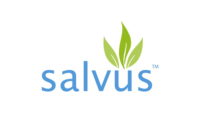Salvus Announces Licensing Agreement with Georgia Tech that Enables PFAS Detection

Image provided by Salvus
Salvus, LLC, a CJB Company, has entered into a licensing agreement with Georgia Tech Research Corporation (GTRC) to gain access to PFAS sensing technology for use in the Salvus™ Detection Platform, the world’s first handheld interferometric detector. Utilizing GTRC’s sensing capabilities for PFAS, the term commonly used for per- and polyfluoroalkyl substances, enables Salvus to pursue development and commercialization efforts within industries where PFAS detection, remediation, and destruction are essential.
As the Environmental Protection Agency (EPA) anticipates finalizing national drinking water standards for several types of PFAS in 2024, increased urgency is placed on developing effective, easy-to-use detection and monitoring tools. Current technology is challenged by speed to results, sensitivity to needed detection levels, and specificity to select compounds. Teams at Salvus and GTRC have already been testing the capabilities of the sensing technology in the Salvus Detection Platform to detect perfluorooctanoic acid (PFOA), one type of PFAS, in drinking water, and have within their sights the goal of parts per trillion within minutes of sampling.
“This licensing agreement puts Salvus in a position to accelerate development and commercialization of PFAS detection on our rapid detection platform. We are currently seeking partner companies that serve those responsible for meeting water quality standards. The goal of the PFAS technology in our Salvus Detection Platform is to empower those entities to make more timely decisions when implementing management and remediation activities that reduce concentrations of PFAS substances,” said Clinton Beeland, CEO of Salvus.
Years of research and testing have shown that the Salvus Detection Platform sets a higher standard for speed, limit of detection, and adaptability compared to other available detection tools. This effective, groundbreaking technology is a first-of-its-kind in its:
- Flexibility to detect and monitor both chemicals and biologicals, either discreetly or through monitoring applications
- Ability to deliver results within hours, minutes, or seconds instead of days, weeks, or months
- Adaptability to be deployed on multiple form factors (e.g., hand-held, monitoring stations, uncrewed vehicles).
Salvus: salvusdetect.com
Looking for a reprint of this article?
From high-res PDFs to custom plaques, order your copy today!






